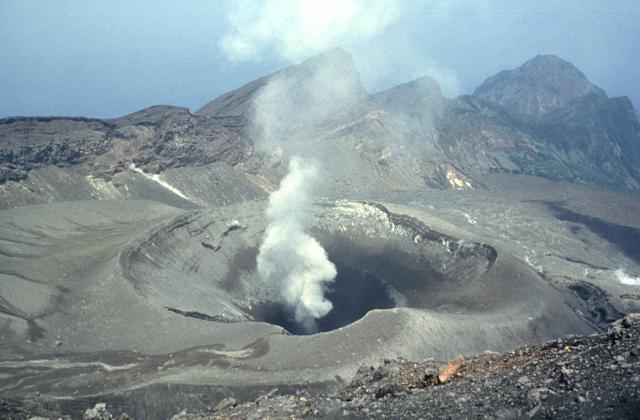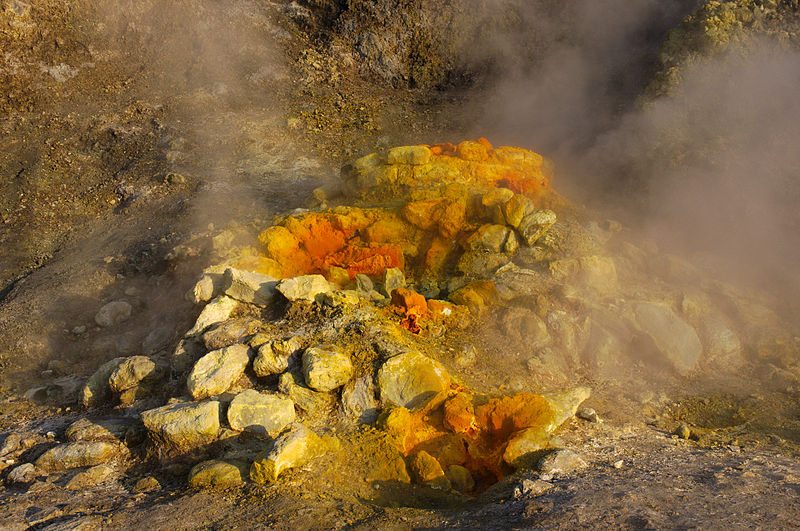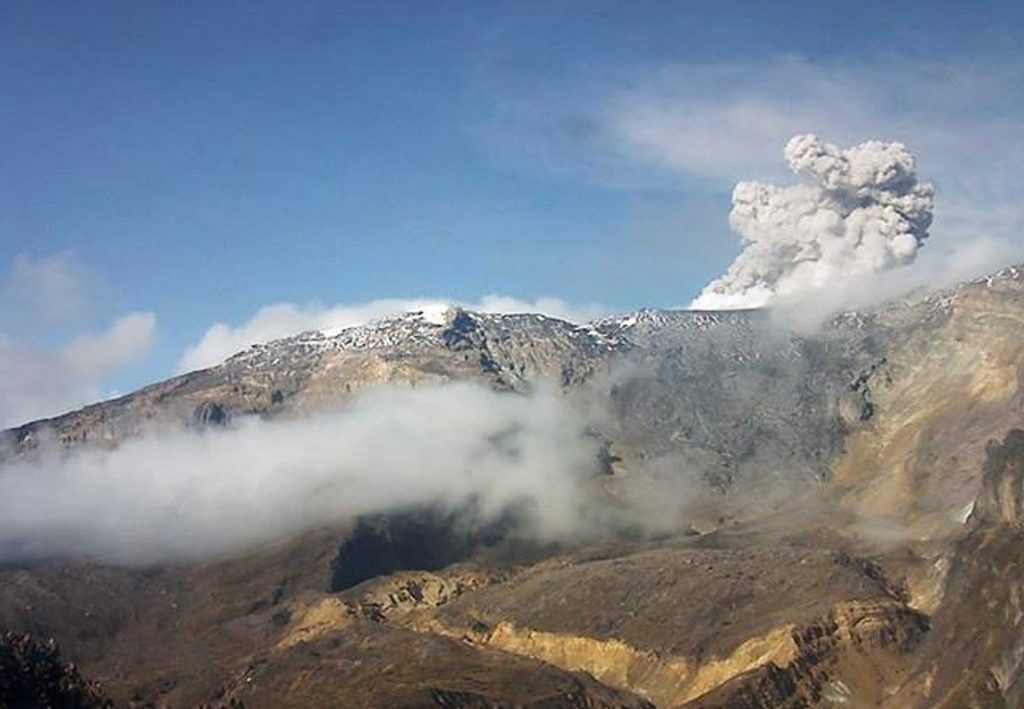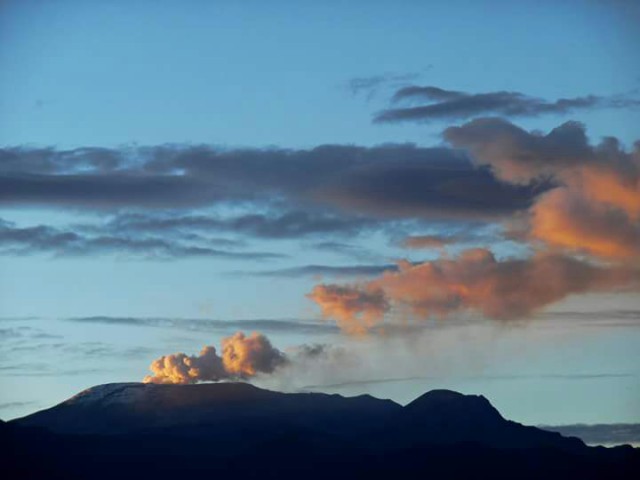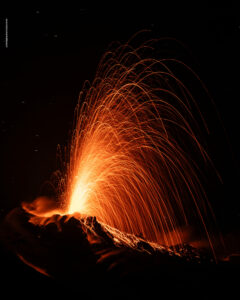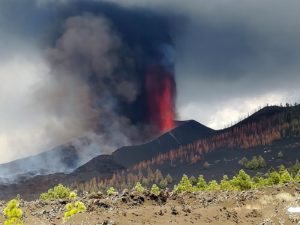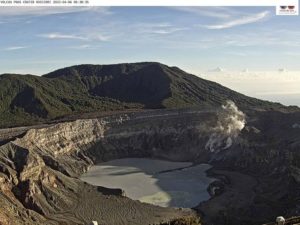March 26 , 2020 .
Kamchatka , Sheveluch :
VOLCANO OBSERVATORY NOTICE FOR AVIATION (VONA).
Issued: March 25 , 2020 .
Volcano: Sheveluch (CAVW #300270)
Current aviation colour code: ORANGE
Previous aviation colour code: orange
Source: KVERT
Notice Number: 2020-35
Volcano Location: N 56 deg 38 min E 161 deg 18 min
Area: Kamchatka, Russia
Summit Elevation: 10768.24 ft (3283 m), the dome elevation ~8200 ft (2500 m)
The fumarole activity of the lava dome of Molodoy Sheveluch volcano on 24 January, 2020.
Volcanic Activity Summary:
Satellite data by KVERT showed the gas-steam plume containing ash extending for 45 km to the north of the volcano.
Explosive-extrusive eruption of the volcano continues. Ash explosions up to 32,800-49,200 ft (10-15 km) a.s.l. could occur at any time. Ongoing activity could affect international and low-flying aircraft.
Volcanic cloud height:
10824-11480 ft (3300-3500 m) AMSL Time and method of ash plume/cloud height determination: 20200325/0320Z – Himawari-8
Other volcanic cloud information:
Distance of ash plume/cloud of the volcano: 28 mi (45 km)
Direction of drift of ash plume/cloud of the volcano: N / azimuth 356 deg
Time and method of ash plume/cloud determination: 20200325/0320Z – Himawari-8
Source : Kvert .
Photo : Yu Demyanchuck. IVS FEB RAS, KVERT .
Japan , Suwanosejima :
29.638°N, 129.714°E
Elevation 796 m
JMA reported that during 13-19 March incandescence from Suwanosejima’s Ontake Crater was visible nightly. On 14 March an ash plume rose 400 m above the crater rim. On 23 March the Tokyo VAAC reported that an explosion produced an ash plume that rose to an altitude of 0.9 km (3,000 ft) a.s.l., or 120 m above the summit, and drifted SE. The Alert Level remained at 2 (on a 5-level scale).
The 8-km-long, spindle-shaped island of Suwanosejima in the northern Ryukyu Islands consists of an andesitic stratovolcano with two historically active summit craters. The summit of the volcano is truncated by a large breached crater extending to the sea on the east flank that was formed by edifice collapse. Suwanosejima, one of Japan’s most frequently active volcanoes, was in a state of intermittent strombolian activity from Otake, the NE summit crater, that began in 1949 and lasted until 1996, after which periods of inactivity lengthened. The largest historical eruption took place in 1813-14, when thick scoria deposits blanketed residential areas, and the SW crater produced two lava flows that reached the western coast. At the end of the eruption the summit of Otake collapsed forming a large debris avalanche and creating the horseshoe-shaped Sakuchi caldera, which extends to the eastern coast. The island remained uninhabited for about 70 years after the 1813-1814 eruption. Lava flows reached the eastern coast of the island in 1884. Only about 50 people live on the island.
Sources: GVP , Japan Meteorological Agency (JMA), Tokyo Volcanic Ash Advisory Center (VAAC)
Photo : Yukio Hayakawa, 1998 (Gunma University).
Italy , Campi Flegrei :
Weekly bulletin from 03/17/2020 to 03/24/2020, (Updated March 24, 2020 at 12:00 p.m. local time).
According to monitoring data:
Seismology: During the last week in Campi Flegrei were recorded 29 earthquakes (Mdmax = 1.1).
The CO2 flux values from the ground recorded continuously from the FLXOV8 station in Pisciarelli (outside the North-East of Solfatara), highlight the continuous trend for several years. The flow of CO2 from the ground, measured in the last week, did not show any significant change compared to the previous period. During the last week, the temperature of the main fumarole of Pisciarelli, recorded continuously, showed an average value of around 115 ° C, in agreement with the values recorded in previous periods. It should be noted that this fumarole being a constantly evolving natural system, with macroscopic changes in the release site, the recorded temperature cannot always continuously coincide with the maximum emission temperature. … / …
Source : INGV .
Read the whole article : http://www.ov.ingv.it/ov/bollettini-campi-flegrei/Bollettino_Flegrei_2020_03_24.pdf
Photo : Patrick Massot.
Colombia , Nevado del Ruiz :
Weekly activity bulletin of the Nevado del Ruiz volcano
The activity level continues at the level: yellow activity level or (III): changes in the behavior of volcanic activity.
With regard to monitoring the activity of the Nevado del Ruiz volcano, the COLOMBIAN GEOLOGICAL SERVICE reports that:
According to the results obtained from the monitoring of activity, across the different parameters, the Nevado del Ruiz volcano has continued to exhibit instability in its behavior over the past week.
The seismicity linked to the dynamics of the fluids, inside the volcanic conduits, presented a decrease in the number of recorded events and an increase in the seismic energy released, compared to the previous week. This seismic activity was characterized by the occurrence of continuous volcanic tremors, long period type (LP) and very long period type (VLP) earthquakes recorded individually or accompanied by pulses of volcanic tremors (TR). The earthquakes presented varying energy levels and spectral content. Some of these signals were associated with small emissions of gas and ash from the volcano, which were confirmed by cameras installed in the volcano area, by officials of the Los Nevados National Natural Park in the region and reports published by VAAC (Current opinions on volcanic ash), such as those recorded yesterday which were dispersed by the wind towards the North-East and the South-East.
The seismicity generated by rock fracturing (volcano-tectonic type) increased in number of earthquakes and in released seismic energy, compared to the previous week. This type of seismicity was mainly located in the northeast and east sector of the volcano as well as in the Arenas crater. The depths of the earthquakes ranged from 1.0 to 10.5 km.
The occurrence of an increase in this seismicity recorded on March 24 in the Northeast sector, with a maximum magnitude of 0.2 ML (local magnitude) for an earthquake at 4:34 am (local time) at 4.7 km depth and a count of 1,188 events recorded up to the date of writing of this bulletin (4:00 p.m.). The maximum magnitude recorded during the week was 1.6 ML (local magnitude), corresponding to the earthquake recorded on March 20 at 07:46 (local time), located in the Arenas crater, 1.7 km deep.
Source : SGC .
Photos : Parque-Nevado-del-Ruiz. , Auteur inconnu .


